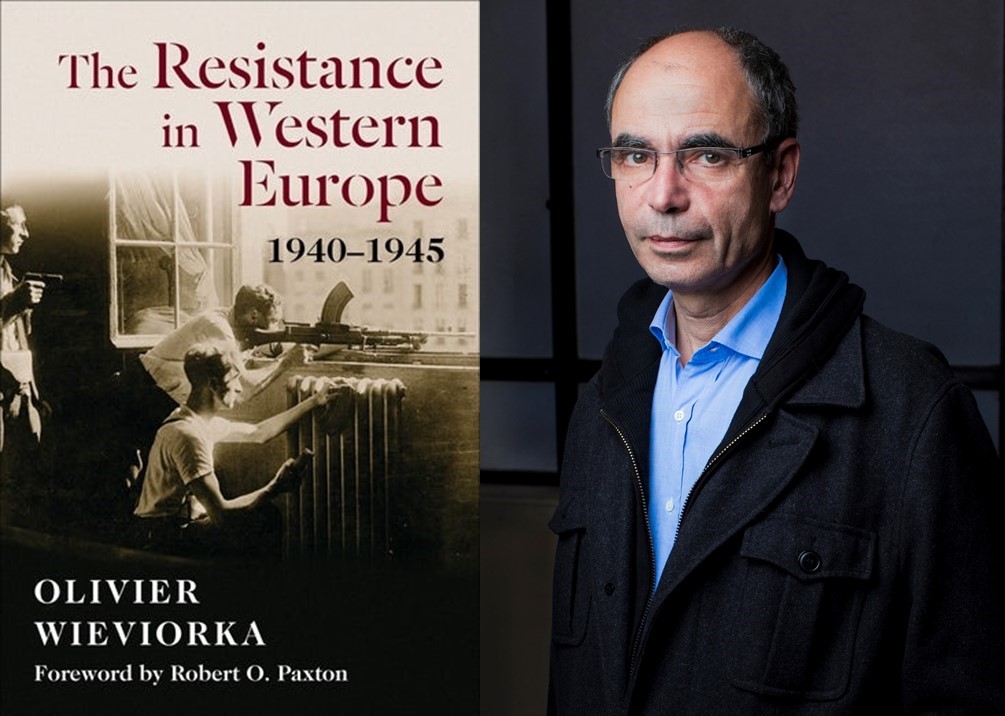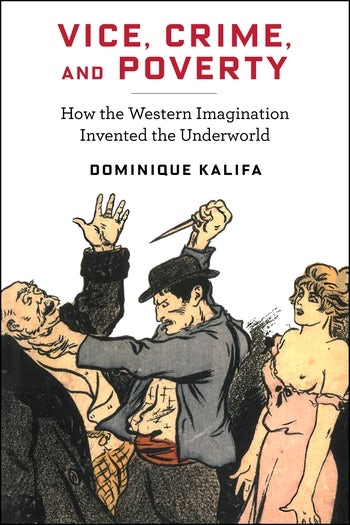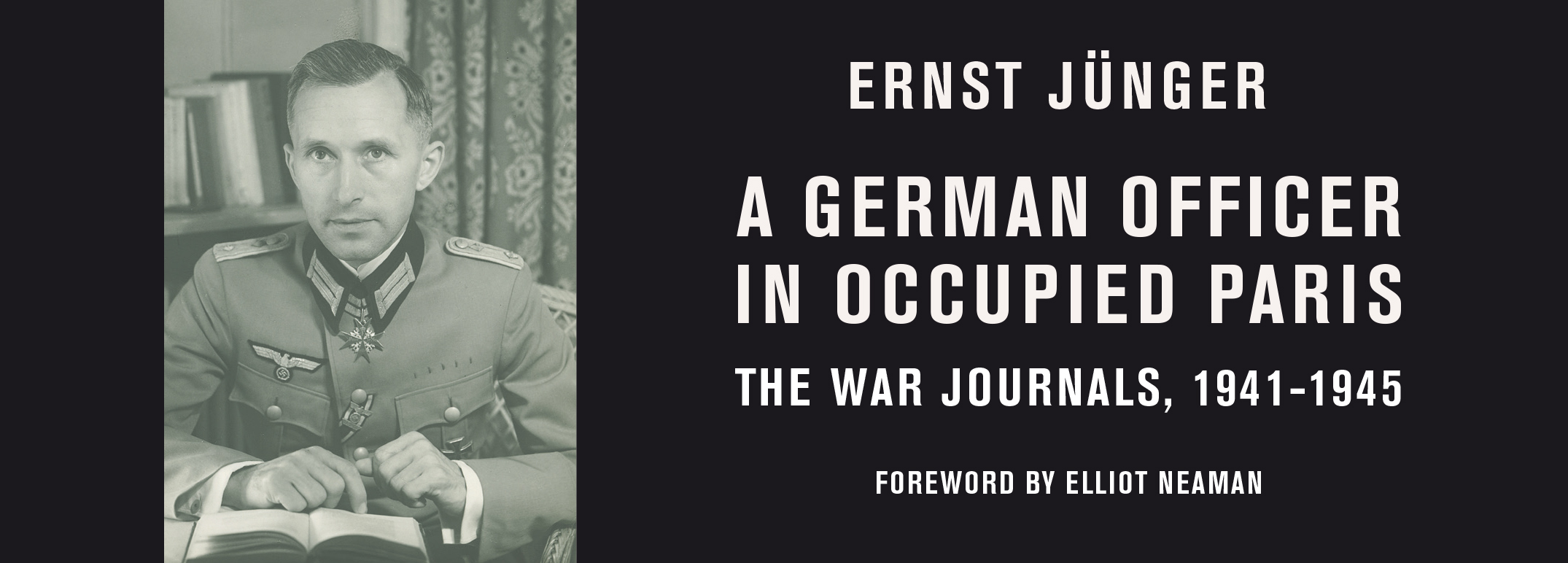Q&A: Olivier Wierviorka on The Resistance in Western Europe, 1940-1945

“Olivier Wieviorka treats the resistance in Western Europe as a multinational coalition. Anglo-Americans supplied arms and funding to resistance groups on the continent, and Resistance movements in turn aided in the Allied war effort. It was part tug-of-war, résistants striving to maintain autonomy, and part pas de deux, the two sides working together in a common effort that helped shape what Wieviorka calls an incipient “European consciousness.” This is a history on a grand scale commensurate with the epic character of the complex struggle it recounts.“
~ Phillip Nord, Princeton University
Since it’s National Translation Month, today we have a very special author Q&A in English and French! Olivier Wierviorka talks to us about his book, The Resistance in Western Europe, 1940-1945, which discusses the inner political workings of the allied powers in their successful attempt at working together to defeat the Third Reich in World War II.
A l’occasion du Mois National de la Traduction, nous vous présentons aujourd’hui une interview toute particulière traduite du français ! Olivier Wieviorka s’est entretenu avec nous pour parler de son ouvrage, L’Histoire de la résistance en Europe occidentale 1940-1945, qui traite des rouages politiques de la collaboration des forces alliées pendant la Seconde Guerre Mondiale, et de leurs efforts fructueux pour s’unir dans la lutte contre le IIIème Reich.
• • • • • •
In English
Q: What is the purpose of your book?
Olivier Wieviorka: The Resistance in Western Europe aims to understand the relationships that united the Anglo-Americans and the internal resistance in six countries of the Old Continent (Norway, Denmark, Netherlands, France, and Italy), during the Second World War. The United States and Great Britain, knowing that they would land in Europe from the North-West, relied on the assistance of clandestine forces to facilitate the progress of their troops. Therefore, they promptly tried to structure the resistance movements in these six countries. By contrast, London and Washington, not thinking of intervening in Eastern Europe or the Balkans, built their support on totally different bases. In short, the six countries chosen do not constitute an intellectual construction but do correspond to a strategic logic, duly internalized by the British and American leaders.
Q: How did the Americans and the British proceed?
OW: In order to support the clandestine forces, London then Washington operated three main levers. First, they acted politically, recognizing, or not, the refugee powers. While Norway or the Netherlands posed few problems since their legitimate authorities had taken refuge on the banks of the Thames, the same was not true for Denmark, France or even Belgium (where King Leopold had preferred to remain with his subjects). Not to mention the Italian imbroglio, after the armistice of September 1943!
Anglo-Americans also developed propaganda directed to captive people, relying mainly on radio weapons. Finally, they set up powerful secret services, the Office of Strategic Services (OSS) for the United States and the Special Operations Executive (SOE) for the United Kingdom. It was the responsibility of these services to assist the clandestine forces by financing them, delivering weapons to them, providing them with means of transmission, and by training their men.
Q: Was this support effective?
OW: Support for national forces was crucial. For if any resistance, whatever it may have been, had been born in our six countries, it would not have been able to grow and develop without the contribution of the Allies.That being said, setting up Anglo-American aid was painful. Neither the United States nor Great Britain knew how to manage the subversive war, which was new at the time. They had to literally invent the terms of their action and fumble their way along. Let us add that there was no shortage of conflicts: between the British, who were determined to maintain leadership, and the Americans, first submissive and then emancipating themselves from British governess; and then between the services since the subversive war was badly considered by many traditional soldiers. For example, Air Force generals preferred to rely on strategic bombing rather than dropping weapons containers. Finally, conflicts have often pitted Anglo-Americans against national authorities. If General de Gaulle was not a convenient partner, neither was the Belgian Prime Minister, Hubert Pierlot; not to mention the Italian and Danish resistance fighters from the inside.
Anyway, national resistances were able to participate properly in the liberation of their countries, even if their military role could not be exaggerated. Above all, the powers in exile succeeded, often with–but sometimes against–London and Washington in managing the delicate transition from liberation. None of the six countries suffered civil war (unlike Greece between 1944 and 1949); and none faced revolutionary unrest – a significant difference from the situation that prevailed in Europe in 1918. This maintenance of law and order– a thought that haunted Anglo-American leaders– is mainly due to the intelligent cooperation between the underground forces and the Anglo-Americans, despite the conflicts that have marked this tortuous road.
Q: How did you proceed with your research?
OW: This research was primarily based on original sources from the National Archives in London and the National Archives and Records Administration (NARA) at College Park. It is thanks to these resources that I have been able, I hope, to provide a new perspective and analysis on the resistance in Western Europe.
Q: How is your work new?
OW: The novelty of my research is based on three elements. First, I associated three plans usually dissociated by historians. We have excellent studies on SOE, and on propaganda… however the links between these different components are hardly ever considered. For example, books on SOE only superficially mention political issues. I wanted to point out the relationship between diplomacy, propaganda, and action; which often support each other but sometimes contradict each other. For example, Anglo-American ambassadors in neutral countries took a negative view of the action of SOE and OSS, which admittedly placed them in a delicate situation: no country likes to see foreign services intervene on its soil! Second, I wanted to propose a transnational vision of resistance. Even though we have good national studies, the European aspect of the clandestine fight is seldom taken into account. My approach makes it possible to point out the similarities and differences between our six countries. Finally, it is also obvious that by insisting on the support provided by Anglo-Americans, I temper the vigorous patriotic mythologies. At liberation, all countries, and not just France or Italy, offered a legendary account of their liberation, which, by magnifying their national clandestine forces, reduced or even concealed the aid provided by the Allies. Therefore, I tried to render unto Ceasar what is his.
En Français
Q: Quel est l’objet de votre livre ?
Olivier Wieviorka: L’Histoire de la résistance en Europe occidentale vise à comprendre les relations qui ont, durant la Seconde Guerre mondiale, uni les Anglo-Américains et les résistances intérieures dans six pays du Vieux Continent (Norvège, Danemark, Pays-Bas, Belgique, France et Italie). De fait, les Etats-Unis et la Grande-Bretagne, sachant qu’ils débarqueraient en Europe du Nord-Ouest, tablaient sur le concours des forces clandestines pour favoriser la progression de leurs troupes. Ils ont donc assez vite essayé de structurer les mouvements de résistance dans ces six pays. En revanche, Londres comme Washington, ne pensant pas intervenir en Europe de l’Est ou dans les Balkans, ont construit leur soutien sur des bases totalement différentes. Bref, les six pays choisis ne constituent pas une construction intellectuelle, mais correspondent bien à une logique stratégique dûment intériorisée par les dirigeants britanniques et américains.
Q: Comment les Américains et les Britanniques ont-ils procédé ?
OW: Pour soutenir les forces clandestines, Londres puis Washington ont actionné trois leviers principaux. Ils ont d’abord agi sur le plan politique, en reconnaissant, ou non, les pouvoirs réfugiés. Si la Norvège ou les Pays-Bas ne posaient guère de problèmes, puisque leurs autorités légitimes s’étaient réfugiées sur les rives de la Tamise, il n’en allait pas de même pour le Danemark, la France, voire la Belgique (où le roi Léopold avaient préféré rester auprès de ses sujets). Sans parler de l’imbroglio italien, après l’armistice de septembre 1943 !
Les Anglo-Américains ont, par ailleurs, développé une propagande dirigée vers les peuples captifs, en s’appuyant principalement sur l’arme radiophonique. Enfin, ils ont monté de puissants services secrets, l’OSS pour les Etats-Unis, le SOE pour le Royaume-Uni. A charge pour ces services d’assister les forces clandestines en les finançant, en leur livrant des armes,en les dotant de moyen de transmission, en formant leurs hommes.
Q: Ce soutien a-t-il été efficace ?
OW: Le soutien apporté aux forces nationales a été déterminant. Car si une résistance, quelle qu’elle fût, serait née dans nos six pays, elle n’aurait pu croître et se développer sans l’apport des Alliés. Ceci posé, l’aide anglo-américaine s’est mise en place dans la douleur. Au fond, ni les Etats-Unis, ni la Grande-Bretagne ne savaient comment gérer la guerre subversive qui représentait à l’époque une nouveauté. Ils ont dû littéralement inventer les termes de leur action et avancer à tâtons. Ajoutons que les conflits n’ont pas manqué : entre les Britanniques, bien décidés à conserver le leadership, et les Américains, d’abord soumis puis désireux de s’émanciper de la gouvernante anglaise ; entre les services, ensuite, puisque la guerre subversive était mal considérée par bien des militaires traditionnels. Les généraux de l’armée de l’Air préféraient, par exemple, tabler sur le bombardement stratégique plutôt que de lâcher des containers d’armes. Les conflits, enfin, ont souvent opposé les Anglo-Américains aux pouvoirs nationaux ; car si le général de Gaulle n’a pas été un partenaire commode, il en est allé de même pour le Premier ministre belge, Hubert Pierlot, sans parler des résistants de l’intérieur italiens et danois.
Quoi qu’il en soit, les résistances nationales ont pu participer en bon ordre à la libération de leur pays, même s’il ne faut pas exagérer leur rôle militaire. Surtout, les pouvoirs en exil ont réussi, souvent avec, mais parfois contre, Londres et Washington, à gérer la délicate transition de la libération. Aucun des six pays considérés n’a subi de guerre civile (à la différence de la Grèce entre 1944 et 1949) ; et aucun n’a affronté de troubles révolutionnaires – une différence de taille avec la situation qui avait prévalu dans l’Europe de 1918. Ce maintien de la loi et de l’ordre – hantise des dirigeants anglo-américains – résulte largement de l’intelligente coopération nouée entre les forces clandestines et les Anglo-Américains, malgré les conflits qui ont jalonné cette route tortueuse.
Q: Comment avez-vous procédé ?
OW: Cette recherche s’est avant tout appuyée sur des sources originales principalement puisées au National Archives de Londres ainsi qu’au NARA de College Park. C’est grâce à ces fonds que j’ai pu, je l’espère, apporter un regard et des analyses inédites sur la résistance en Europe Occidentale.
Q: En quoi votre ouvrage est-il nouveau ?
OW: La nouveauté de ma recherche tient, me semble-t-il, à trois éléments. D’une part, j’ai associé trois plans que les historiens, en règle générale, dissocient. Nous disposons d’excellentes études sur le SOE, sur la propagande… mais les liens entre ces différentes composantes sont rarement pensés. Les livres sur le SOE, par exemple, n’évoquent qu’à la marge les enjeux politiques. J’ai voulu au contraire pointer les interférences entre diplomatie, propagande et action qui souvent s’épaulent mais parfois se contredisent. Les ambassadeurs anglo-américains dans les pays neutres, par exemple, considéraient d’un mauvais œil l’action du SOE et de l’OSS qui les plaçaient, il est vrai, dans une situation délicate : aucun pays n’aime voir des services étrangers intervenir sur son sol ! J’ai souhaité, d’autre part, proposer une vision transnationale de la résistance. Car si nous disposons de bonnes études nationales, l’aspect européen de la lutte clandestine n’est pour ainsi dire jamais pris en compte. Cette approche permet de pointer les similitudes comme les différences entre nos six pays. Il va sans dire, enfin, qu’en insistant sur le soutien apporté par les Anglo-Américains, je nuance de puissantes mythologies patriotiques. A la libération, tous les pays, et pas seulement la France ou l’Italie, ont en effet proposé un récit légendaire de leur libération qui, en magnifiant leurs forces clandestines nationales, minorait, voire occultait l’aide alliée. J’ai donc essayé de rendre à César ce qui lui revenait.
If you enjoyed this translation, enter our drawing for a chance to win a free copy of the book. Or, save 30% when you order online using coupon code: CUP30!








